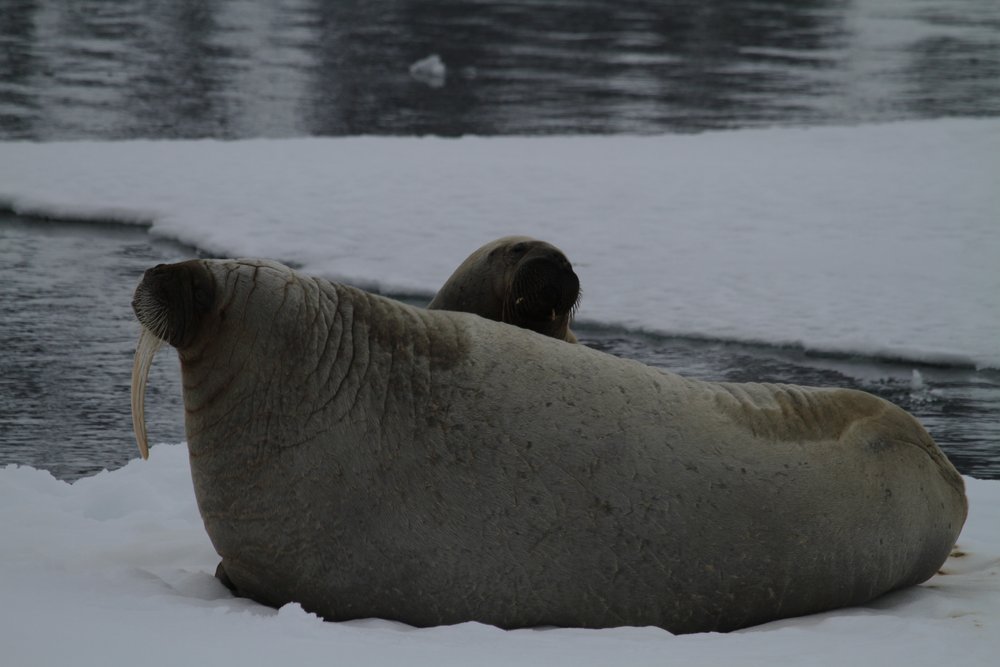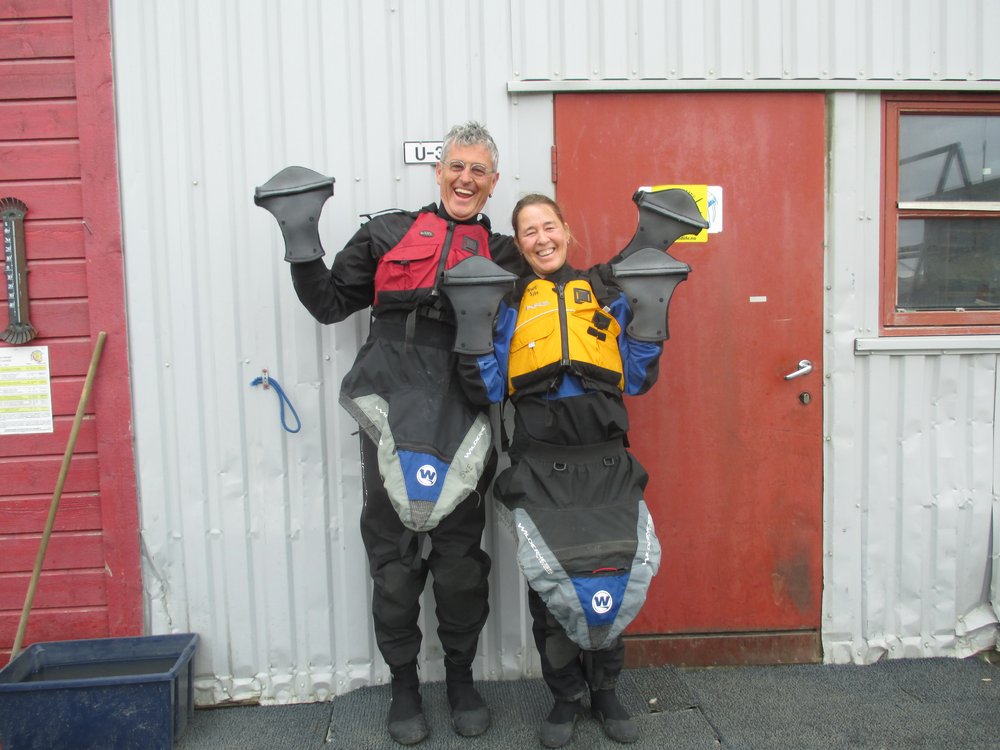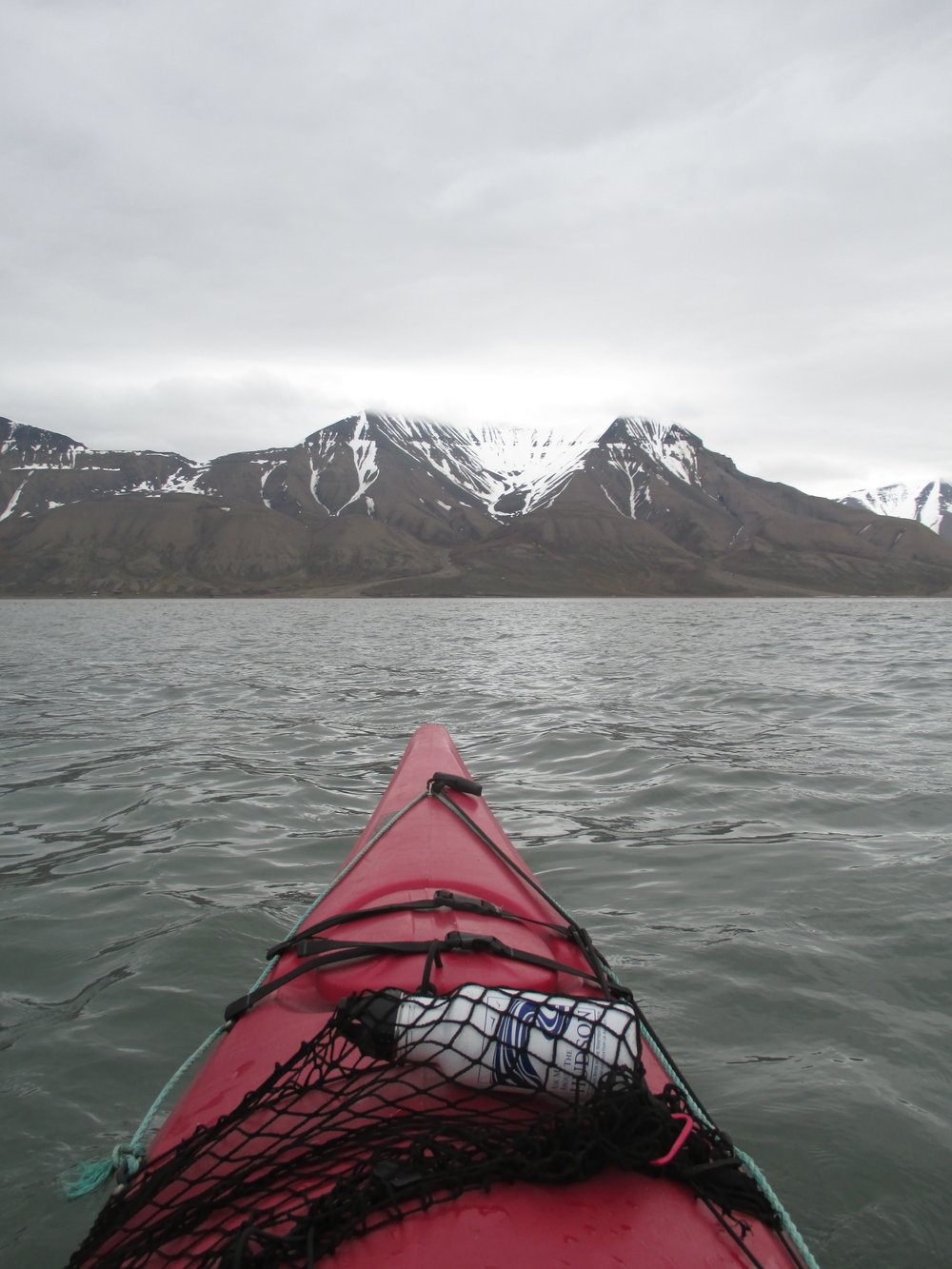
In 1896 Nansen with his traveling companion Johansen end their three year expedition in the Arctic crossing open water in kayaks made of skins stretched over a wooden frame. The kayaks were boxy and stable and could carry a large load. At one point, walrus surround their boats, and a walrus “shot up beside [Nansen], threw itself onto the edge of the kayak, took hold farther over the deck with one fore-flipper and, as it tried to upset [him], aimed a blow at the kayak with its tusks.” At another point, a walrus punches a hole through his boat.

A few days later we saw a pile of walrus on land. They lay on their backs, tusks pointed toward the sky. They lolled on each other, and on the sand, fanning themselves with their flappers. Two remained in the water, playfully rising up in battle. The tusks are formidable, long, wide, hard. How fast it could gouge a boat!

I’ve had a boat float off without me, but swimming out into the Hudson is not swimming the Arctic. I had made three quick plunges into the icy water while I was in the North—three strokes was about all I could manage. I emerged breathing quickly, stunned by the cold. My body soon started to tingle, to vibrate with an ice cube vigor. It takes Nansen hours to warm himself.
It is for gripping scenes like this that I read these polar narratives, thrilling at the adventures. In some ways, I have spent my life trying to recreate that sense of adventure that comes with the unknown. And so certainly that was in my mind when I rented a kayak through Svalbard Wilderness Adventures and with fellow Arctic Circler Donald Fortescue headed out at 9 in the morning in dry suits, and full of instructions on the cold. We had one young Swedish guide and three other kayaks, all doubles (Donald and I were in singles). We shoved our boats into the Inisfjorden where Longyearbyen sits. The water was black-green and wind-ruffled. We flew across the Fjord and slid onto shore on the far side within forty five minutes. There a few cabins rested. Some of these rustic cabins were built (and refurbished) when coal was mined from the mountain above. Now these are summer cabins. “Norwegians like their summer cabins,” the young guide explained. And I thought: who doesn’t?
 We built a fire and, wrapped in snowmobile suits, sat around shivering and eating a lunch of cheese and sausages. The Swedish boys regaled us with tales of driving the bad roads of Norway along the coast to Tromso in their Previa van. They would be road tripping back to Stockholm, looking for adventure that would probably come when their unreliable car broke down.
We built a fire and, wrapped in snowmobile suits, sat around shivering and eating a lunch of cheese and sausages. The Swedish boys regaled us with tales of driving the bad roads of Norway along the coast to Tromso in their Previa van. They would be road tripping back to Stockholm, looking for adventure that would probably come when their unreliable car broke down.
We walked the shoreline, enjoying a Purple Sandpiper along the beach line and the ever-present Arctic Terns. We looked at the remains of an airplane, wrecked on this lonesome shore.
The return felt like paddling across a wind-tossed Hudson River in early April, the water still snapping cold. We had no encounters with walrus or other creatures. We had no mishaps with the boats. It was an oddly tame paddle; this is what the guides guarantee. But something in me expected an adventure in this half tamed, cold land. But what I realized as my boat slid on to shore, my shoulders and arms pleasantly sore, that my outings alone, close to home, in the tame and populated Hudson Valley, are often full of more unexpected moments, mis-haps, those moments I’d call adventure.